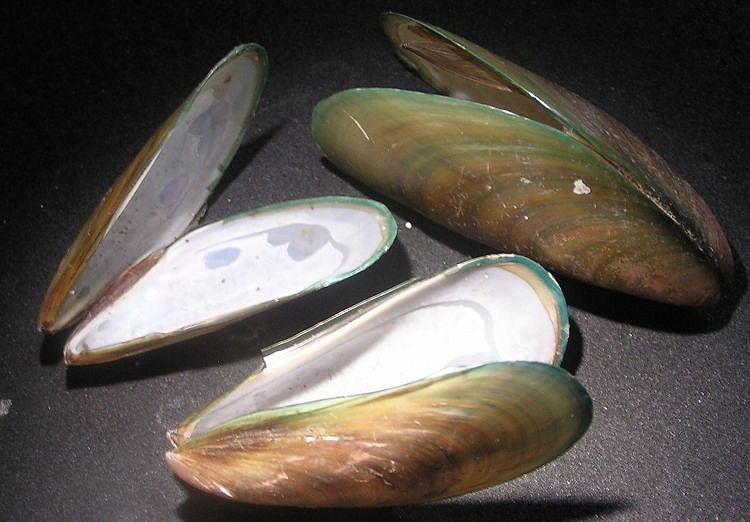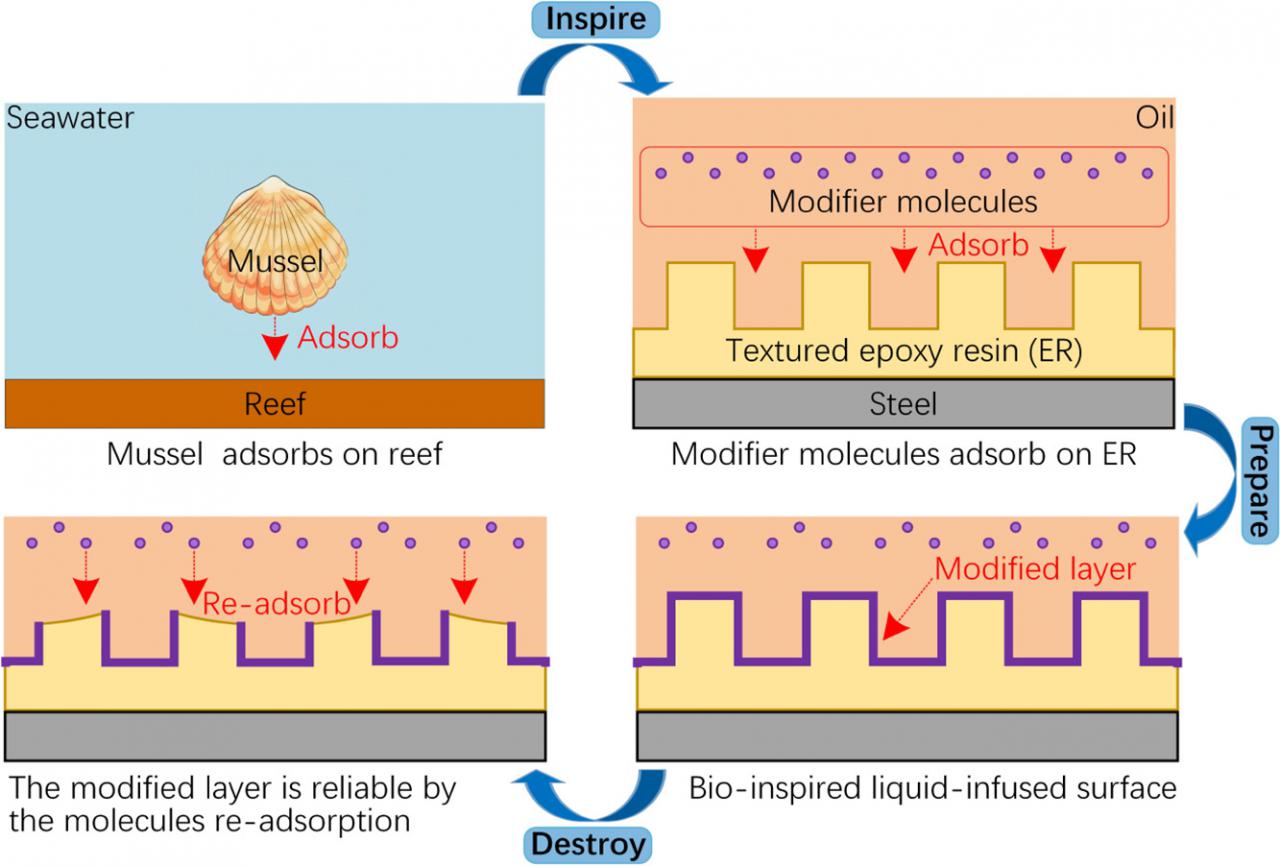Researchers have found a new way to help epoxy coatings become hydrophobic and anti-corrosion based on the bionic structure of mussels (greenmouth, sea rainbow). This research was published in the November 2023 issue of “Organic Coatings Progress in
Organic Coatings” Volume 184.

Epoxy resin (ER) is usually used as an important resin material in anti-corrosion coatings, but its hydrophilicity hinders the performance of anti-corrosion properties. Usually, liquid is injected into the surface of epoxy resin to modify its hydrophobicity and enhance its anti-corrosion ability. However, the modified epoxy resin becomes more brittle and the durability of the coating is greatly affected. In order to solve the above challenges, the bionic structure of mussels was introduced into the epoxy resin modification.
During the preparation of LIS (BI-LIS), the modified mineral oil composed of hydrolysis modifier and mineral oil is added dropwise to the textured epoxy resin and left for 3 days to obtain the BI-LIS sample.
LIS solves the problem of epoxy hydrophobicity
The BI-LIS sample not only exhibits better hydrophobicity and anti-corrosion properties than the original epoxy resin, but more importantly, it has the ability to restore the modified layer through the reabsorption of modifier molecules, which can respond to the change of the modified layer. Impair and enhance the reliability of LIS.
Liquid-infused surface (LIS) is a new type of functional surface with hydrophobic properties that has attracted great attention from researchers since its introduction. Inspired by this, someone proposed to create LIS on epoxy resin
as a potential solution to its hydrophilicity problem. In the classic method, the preparation process of LIS usually includes three steps: preparing a substrate with surface texture, covering the textured substrate with a modified layer and injecting oil. Among them, the purpose of covering the modified layer is to make the textured substrate meet both lipophilic and hydrophobic requirements. Currently, there are several methods to obtain modified layers on textured substrates. For example, a modified layer on the sample surface can be achieved by immersing the sample in a mixed solution of 1-dodecanethiol and ethanol, or using a solution of polydimethylsiloxane (PDMS) mixed with n-hexane to achieve the same effect. Effect. Modified layers can also be obtained by immersing the sample in 1H, 1H, 2H, 2H-perfluorodecyltriethoxysilane (FAS-17) and n-octadecyltrimethoxysilane (OTS).
However, as far as we know, the modified layer is often fragile and easily damaged by external forces. What’s more serious is that if the modification layer is lost, it will cause water droplets to soak into the textured substrate and the LIS will lose its hydrophobicity. Therefore, improving the reliability of the modified layer is crucial to improving the reliability of LIS.
Bionic inspiration from mussels
In nature, spontaneous adsorption behaviors of certain animals have been observed and these behaviors are considered as potential sources of inspiration to improve the reliability of the modified layers. Taking some marine invertebrates (such as mussels, barnacles, etc.) as an example, they will spontaneously adsorb on the surface of attachment substrates (such as reefs, ships, etc.) in seawater. In this case, even if these invertebrates are manually removed, new invertebrates will re-adsorb to the attachment substrate within a relatively short period of time. So, in other words, the surface to which the substrate is attached is almost always covered with adsorbent. Inspired by this, if the molecules used to build the modified layer can exist in a free state (similar to mussels) and can spontaneously adsorb to the textured substrate, then for
It would be beneficial for LIS. The reason for this is that, in this novel idea, if molecules already adsorbed on the substrate are damaged, the free molecules will re-adsorb in the damaged areas, thus achieving a long-lasting modified layer.

In this study, a template method was used to prepare textured ER, which is suitable for epoxy resins with thermosetting properties. Subsequently, the modified mineral oil obtained by adding a hydrolysis modifier to mineral oil is dropped on the textured epoxy resin and left for a period of time to obtain bionic LIS (BI-LIS for short). time. In this preparation method, modifier molecules, mineral oil, and textured epoxy resin play similar roles to marine invertebrates, seawater, and attachment bases, respectively. As the textured epoxy resin is continuously “adsorbed” by the modifier molecules, its surface is gradually covered by the modified layer. Finally, the textured epoxy resin with modified layers captures the oil film to obtain BI-LIS. On the one hand, compared with traditional epoxy resin coatings, BI-LIS
Exhibits better hydrophobicity and anti-corrosion properties. On the other hand, compared with the LIS specimens of the classic method, the reliability of the modified layer and performance of the BI-LIS specimens achieved by the re-adsorption of modifier molecules to the damaged areas of the modified material was verified. layer. The findings provide potential opportunities to expand the range of applications of epoxy resins.
Energy dispersive spectroscopy results show that the fluorine content in the modified epoxy resin structure gradually increases, indicating that the modified layer is formed as the fluoroalkyl groups in the modifier molecules gradually adsorb. The BI-LIS sample not only exhibits better hydrophobicity and anti-corrosion properties than epoxy resin, but more importantly, it has the ability to restore the modified layer through the reabsorption of modifier molecules, which can respond to the damage of the modified layer. and improve the reliability of LIS.
This studyThe research aims to enhance the hydrophobicity and corrosion resistance of epoxy resin and provide technical support for broadening the application range of epoxy resin.


